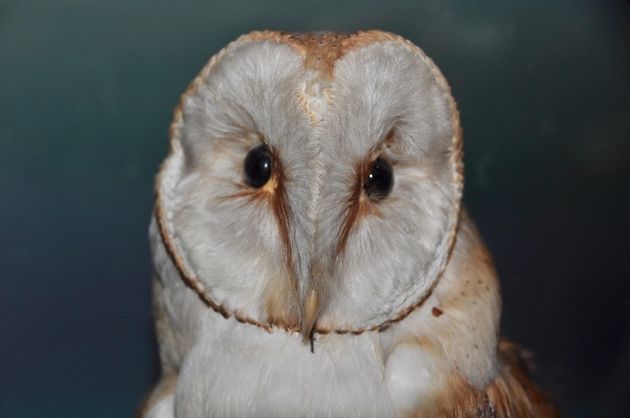It is estimated that a couple of owls can eliminate up to two thousand mice per year.
 A barn owl (Tyto Alba). / Photo: Antonio Cruz
A barn owl (Tyto Alba). / Photo: Antonio Cruz
Desert creatures will meet with hyenas,
and wild goats will bleat to each other;
there the night creatures will also lie down
and find for themselves places of rest.
The owl will nest there and lay eggs,
she will hatch them, and care for her young (Is. 34:14)
The barn owl (Tyto alba), a member of the Tytoninae family, is a bird of prey which hunts during the night. It is distributed across a very extensive territory and, in fact, can be seen in five continents. It is only absent from the polar regions, the deserts, the north of the Himalayas, Indonesia and some Pacific islands.
It has a large head, by comparison with the rest of its body, a curved beak and powerful talons, like the eagle-owl.
In the Bible, several Hebrew terms are used to refer to the owl, though they turn out not to be so easy to identify. In the first place we have the word yanshuph, which appears to refer to the night owl listed as one of the unclean animals (Lev. 11 v 16 and Deut. 14 v 15), and which is translated as owl. This same term appears in Isaiah 34 vv 11 and 14, but with a slight variant yanshoph, and seems to refer to the same bird, whereas in both the Septuagint and the Latin vulgate the term used refers to the “ibis”. However, it is unlikely that this is the correct translation as, by contrast with the owl, the owl, the ibis does not live in derelict or ruined buildings, but in wetlands.
The second Hebrew term referring to this bird is kos, which literally means “cup”. It is thought that this could be an allusion to the owl’s large eyes, which resemble goblets (Lev. 11v16, Deut. 14v15, Psalm 102v6). Other terms used are gippoz “large owl” (Isaiah 34v15) and lilit, (Isaiah 34v14) (screech owl) which literally means “nocturnal spectre”, a feature which could also be attributed to this bird.
For the ancient Egyptians the owl symbolised death, the night, the cold, and also passivity. It was a kind of representative of the setting sun. The Greeks, on the other hand, associated the owl with Athena, the goddess of war and wisdom. They thought that seeing one of these birds augured victory in battle. For the Romans, by contrast, this omen meant just the opposite: bad luck, death and future calamities.
Despite these mythic associations and legends, there is no doubt that owls play a crucial role in our natural ecosystems. They are vital for agriculture, as they keep rodents at bay.
It is estimated that a couple of owls can eliminate up to two thousand mice per year over a relatively small area. They measure between 30 and 35 cm in length and their in-flight wingspan can be up to 95 cm. Both the male and the female can weigh up to 350 grams. The tarsus of their talons is covered with feathers, which enable them to fly silently. Their short, rounded wings have small filamentous feathers, which also contribute to their flight being noiseless.

[photo_footer] Photo: Antonio Cruz [/photo_footer] Before swooping down for the hunt, they are very observant, and their head moves quickly and agilely as they locate their prey with extreme precision. Their ears are at different heights on their head, which enables them to form a kind of precise triangle with animals that emit sounds during the night.
They have 17 different sound patterns that they emit very stridently. As has been pointed out, they are carnivorous birds which feed mainly on mice, moles and other small mammals. Although they can swallow their prey whole, the parts that they cannot digest, like the skin, the hair, the bones, are regurgitated in the form of a small dark compact ball called a pellet.
Owls are monogamous, and remain with the same partner throughout their lives. They do not usually build nests but take refuge in the hollow spaces of rural buildings, such as belfries, barns or old ruins, as the Bible also mentions.
In C.H. Spurgeon’s great work The Treasury of David a curious 19th century poem written by Samuel Taylor Coleridge is quoted in which the owl appears as a symbol of unbelief:
Forth from his dark and lonely hiding place
(Portentous-sight!) the owlet Atheism,
Sailing on obscene wings athwart the noon,
Drops his blue-fringèd lids, and holds them close,
And hooting at the glorious sun in Heaven,
Cries out, "Where is it?" [1]
[1] Spurgeon, C. H. The Treasury of David.

Las opiniones vertidas por nuestros colaboradores se realizan a nivel personal, pudiendo coincidir o no con la postura de la dirección de Protestante Digital.
Si quieres comentar o